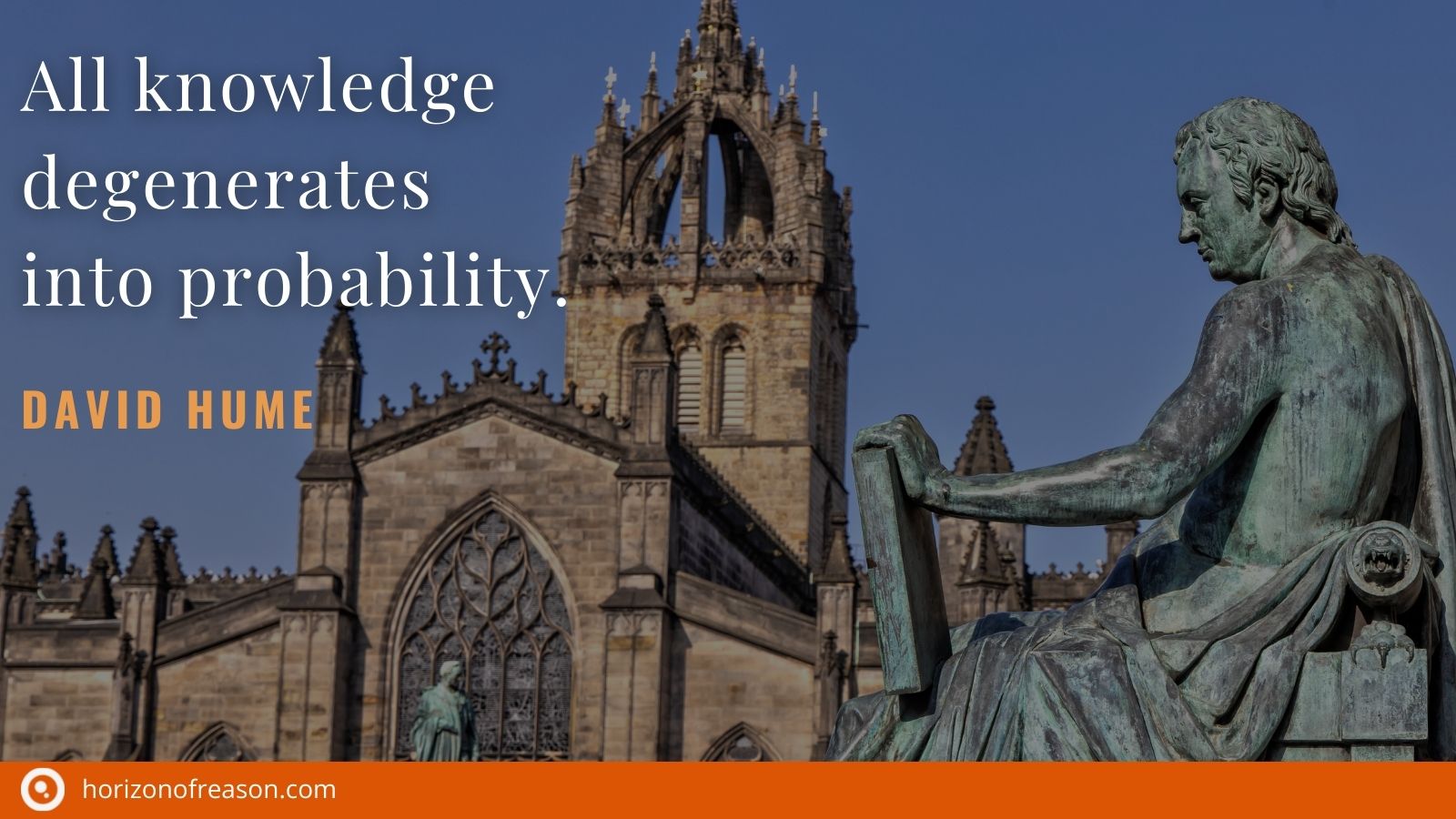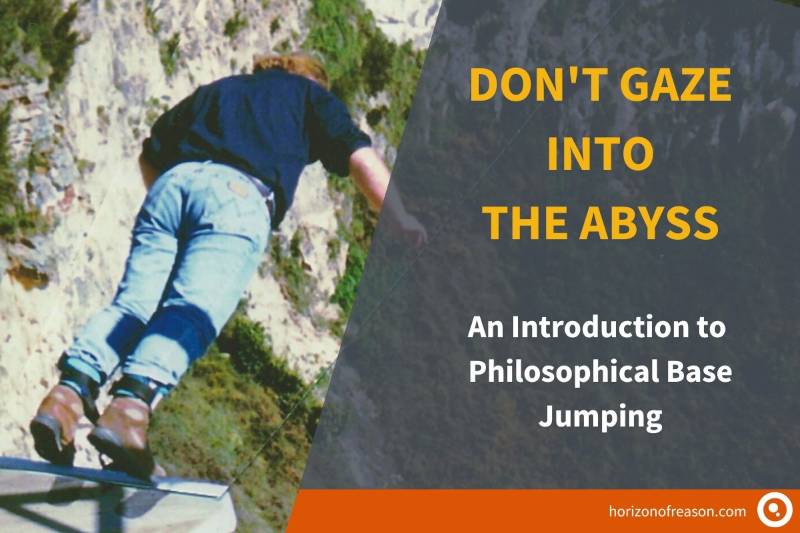
David Hume’s Scepticism of the External World

Peter Prevos |
1224 words | 6 minutes
Share this content
Our consciousness presents us with a reality that seems coherent and predictable. Philosophical reflection upon this common sense belief has, however, often resulted in scepticism about whether we can safely conclude that there is indeed a material world outside our consciousness. David Hume (1711–1776) wanted to find out how we come to this ingrained belief in the external world.1
Hume distinguished between the "vulgar opinion"—the common sense belief that perception and external objects are the same—and the philosophical view, in which perception and the perceived object are distinct from each other. Hume believed that the philosophical view of representative realism is worse than the naive realism of the common sense view, because the philosophical view takes no stand on whether our perceptions are continued, identical and independent or whether they are dependent, interrupted and different. The philosophical view tries to justify the belief in external objects on these contradictory assumptions, which results in a "system of double existence".
Hume investigated what kind of cognitive processes give rise to the common sense belief that there is an external world. He argued that our common sense belief in the existence of things outside the mind depends on two inferences: one from constancy and the other from coherence. Hume believes, however, that these inferences are flawed and he can only find “contradictions and difficulties in every system concerning external objects”. According to Hume, only scepticism about the existence of the external world remains. In this paper, the arguments from constancy and coherence will be summarised and it will be argued that they are not as irrational as Hume makes them out to be.

David Hume's Theory of the External World
Hume notes that objects to which we attribute continued existence have a particular constancy. If I look outside my window right now, I see houses, trees and a cat. If I close my eyes for a while and look outside the same window again, I believe to see the same houses, trees and cat.
This constancy is, however, not perfect. Bodies change position and other qualities (the cat is now chasing a bird and the tree has lost a leaf) and may become hardly recognisable after a while. What we see in the later perception are the ‘same' in the sense of qualitative identity, i.e. exactly similar, and from this the account is to explain the movement of thought to the conclusion that they are numerically identical. But even in these changes, the perceived bodies maintain coherence.
It is this constancy of perception and the coherence between the individual perceptions that are, according to Hume, the corner stone of the common sense belief in the existence of an external world. In each case the basic pattern is that we move from constancy and coherence to it's being the same object represented and if it is the same, it must be that the object has existed unperceived through the interval and so it must be something external to the mind.
Constancy
We are, according to Hume, predispositioned to regard successive impressions as constant, which leads us to regard interrupted perceptions as the same because we ignore the numerical differences, such as time and place, between them.2 We consider these impressions to be the same on account of their resemblance.
The interruption we perceive is contrary to a perfect, ongoing, existence. We perceive that the first impression is annihilated and a second impression is newly created. This is a difficult concept for the human mind and we resolve this by supposing that these interrupted perceptions are created by a real existence.
The effects of constancy can, according to H.H. Price, be described in two stages. The first stage is the illusion that our perceptions are constant. Crucial aspect of Hume's account of the common sense belief in external objects is that we attach a constant identity to the fleeting images of our perception. We therefore refer to our perceptions usually in the genitive form. We refer to a ‘noise as of a door turning upon its hinges' and identify that sound with an opening door, rather than giving an abstract description of the sound. The second stage is the postulation of external objects, of unsensed sensibilia, intended to repair the interrupted experience of our perception.
Coherence
Hume writes that constancy has to be combined with coherence in order to be able to explain our propensity to believe in the existence of external objects. Our internal impressions have a certain regularity—an internal coherence—in their appearances. Hume argues that the mind postulates external objects in order to explain this regularity in our experiences.
The mind makes extended assumptions based on our partial observance of the world. Hume gives the example of him hearing a squeaking sound and after a short while seeing a porter with a letter for him. From these two facts his mind deduces that the porter opened the front door, walked up the staircase and entered his study. He believes these events to be facts, although he has not actually perceived them. Hume argues that the perceived events only make sense if he assumes that the door exists, even when he does not perceive it: ‘I am led to regard the world as something real and durable and as preserving its existence, even when it is no longer present to my perception'.
Discussion
Constancy and coherence are biological dispositions, wired into the fabric of our mind. The mechanism of constancy and coherence, as described by Hume, has been verified through experimental psychology. The results of ‘selective-looking' experiments suggest that infants as young as 14 weeks assume that objects continue to exist when out of view. Nevertheless, they take delight in having that understanding confirmed in a game of ‘peek-a-boo'.3
Hume argues that because it is "a false opinion that any of our objects or perceptions, are identically the same after an interruption; and consequently the opinion of their identity can never arise from reason, but must arise from the imagination".
The inferences are, according to Hume, not only non-rational—derived from "nothing but custom"—they must also be considered irrational, because they go against rational thinking as the mind postulates unperceived objects. The inferences are indeed not rational, judged by the strict standards that Hume places on rationality. Hume, in line with Cartesian thinking, believes that rational reasoning is by definition error-free and the inferences from constancy and coherence are thus not rational.
In a practical context, rationality is the adaptation of a means to an end. Applied to the constancy and coherence inferences, this implies that they are indeed rational as they serve an important means to an end: the belief in the existence of an external world, which is essential from an evolutionary perspective. This does, however, not solve the problem of whether there exists a world outside our consciousness. I have argued in a earlier paper that this question lies beyond the purview of philosophical reasoning. Whether the universe is material, or consists of images in our mind is from this point of view unimportant.
Notes
Share this content


